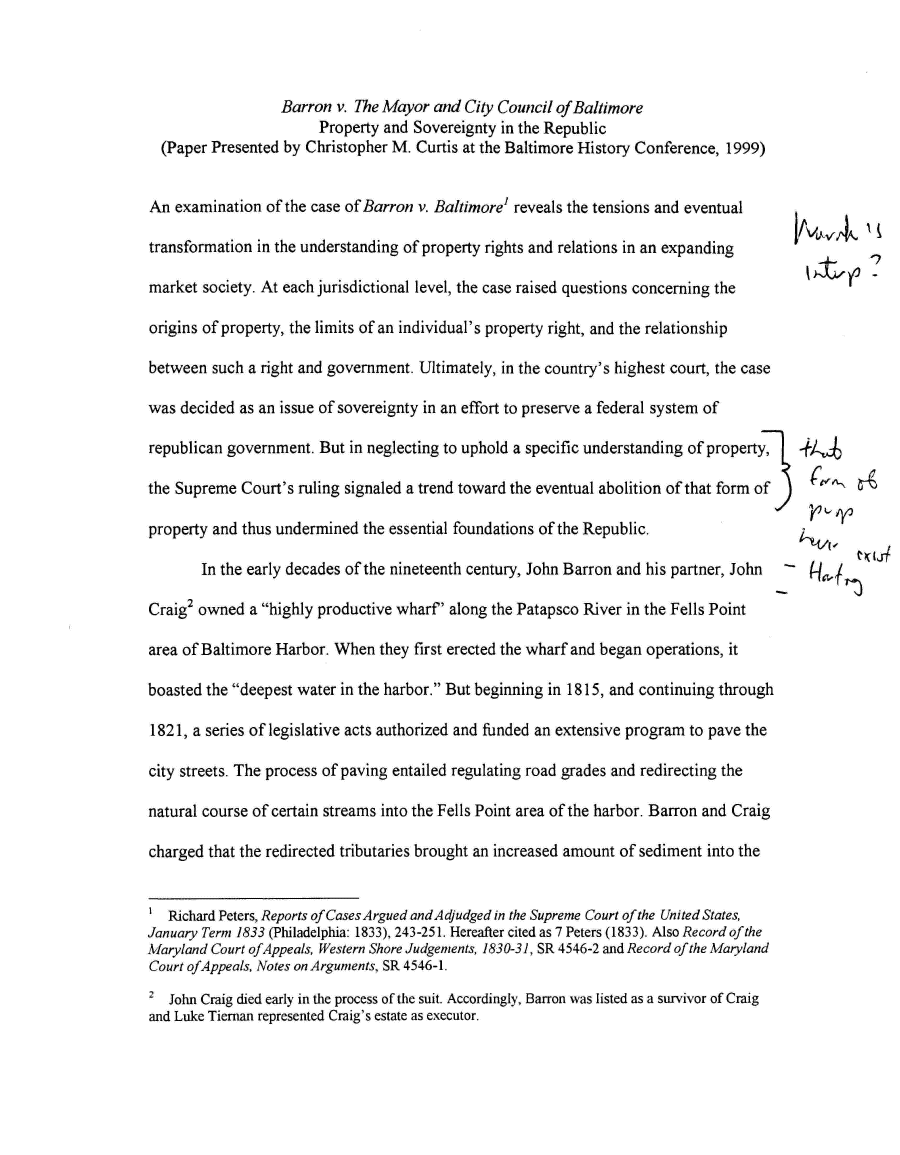|
Barron v. The Mayor and City Council of Baltimore
Property and Sovereignty in the Republic
(Paper Presented by Christopher M. Curtis at the Baltimore History Conference, 1999)
An examination of the case of Barron v. Baltimore1 reveals the tensions and eventual
transformation in the understanding of property rights and relations in an expanding
Ixt^yfl -
market society. At each jurisdictional level, the case raised questions concerning the
origins of property, the limits of an individual's property right, and the relationship
between such a right and government. Ultimately, in the country's highest court, the case
was decided as an issue of sovereignty in an effort to preserve a federal system of
republican government. But in neglecting to uphold a specific understanding of property, -
the Supreme Court's ruling signaled a trend toward the eventual abolition of that form of ]
>/
/
property and thus undermined the essential foundations of the Republic.
In the early decades of the nineteenth century, John Barron and his partner, John "~ £f /
— - 0
Craig2 owned a "highly productive wharf along the Patapsco River in the Fells Point
area of Baltimore Harbor. When they first erected the wharf and began operations, it
boasted the "deepest water in the harbor." But beginning in 1815, and continuing through
1821, a series of legislative acts authorized and funded an extensive program to pave the
city streets. The process of paving entailed regulating road grades and redirecting the
natural course of certain streams into the Fells Point area of the harbor. Barron and Craig
charged that the redirected tributaries brought an increased amount of sediment into the
1 Richard Peters, Reports of Cases Argued and Adjudged in the Supreme Court of the United States,
January Term 1833 (Philadelphia: 1833), 243-251. Hereafter cited as 7 Peters (1833). Also Record of the
Maryland Court of Appeals, Western Shore Judgements, 1830-31, SR 4546-2 and Record of the Maryland
Court of Appeals, Notes on Arguments, SR 4546-1.
2 John Craig died early in the process of the suit. Accordingly, Barron was listed as a survivor of Craig
and Luke Tiernan represented Craig's estate as executor.
|

